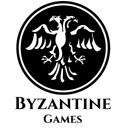Bello Galico:
XXV.—Caesar, having removed out of sight first his own horse, then
those of all, that he might make the danger of all equal, and do away
with the hope of flight, after encouraging his men, joined battle. His
soldiers, hurling their javelins from the higher ground, easily broke
the enemy's phalanx. That being dispersed, they made a charge on them
with drawn swords. It was a great hindrance to the Gauls in fighting,
that, when several of their bucklers had been by one stroke of the
(Roman) javelins pierced through and pinned fast together, as the point
of the iron had bent itself, they could neither pluck it out, nor, with
their left hand entangled, fight with sufficient ease; so that many,
after having long tossed their arm about, chose rather to cast away the
buckler from their hand, and to fight with their person unprotected. At
length, worn out with wounds, they began to give way, and as there was
in the neighbourhood a mountain about a mile off, to betake themselves
thither.
XXXV.—Which command having been most carefully obeyed, when any cohort
had quitted the circle and made a charge, the enemy fled very
precipitately. In the meantime, that part of the Roman army, of
necessity, was left unprotected, and the weapons received on their open
flank. Again, when they had begun to return to that place from which
they had advanced, they were surrounded both by those who had retreated
and by those who stood next them; but if, on the other hand, they wished
to keep their place, neither was an opportunity left for valour, nor
could they, being crowded together, escape the weapons cast by so large
a body of men. Yet, though assailed by so many disadvantages, [and]
having received many wounds, they withstood the enemy, and, a great
portion of the day being spent, though they fought from day-break till
the eighth hour, they did nothing which was unworthy of them. At length,
each thigh of T. Balventius, who the year before had been chief
centurion, a brave man and one of great authority, is pierced with a
javelin; Q. Lucanius, of the same rank, fighting most valiantly, is
slain while he assists his son when surrounded by the enemy; L. Cotta,
the lieutenant, when encouraging all the cohorts and companies, is
wounded full in the mouth by a sling
- centurions usually wore high quality mail.. this one died from his javelin wound, while another was just wounded by being hit by slingshot to the face...
XLIV.—In that legion there were two very brave men, centurions, who
were now approaching the first ranks, T. Pulfio, and L. Varenus. These
used to have continual disputes between them which of them should be
preferred, and every year used to contend for promotion with the utmost
animosity. When the fight was going on most vigorously before the
fortifications, Pulfio, one of them, says, "Why do you hesitate,
Varenus? or what [better] opportunity of signalising your valour do you
seek? This very day shall decide our disputes." When he had uttered
these words, he proceeds beyond the fortifications, and rushes on that
part of the enemy which appeared the thickest. Nor does Varenus remain
within the rampart, but respecting the high opinion of all, follows
close after. Then, when an inconsiderable space intervened, Pulfio
throws his javelin at the enemy, and pierces one of the multitude who
was running up, and while the latter was wounded and slain, the enemy
cover him with their shields, and all throw their weapons at the other
and afford him no opportunity of retreating. The shield of Pulfio is
pierced and a javelin is fastened in his belt. This circumstance turns
aside his scabbard and obstructs his right hand when attempting to draw
his sword: the enemy crowd around him when [thus] embarrassed. His rival
runs up to him and succours him in this emergency. Immediately the whole
host turn from Pulfio to him, supposing the other to be pierced through
by the javelin. Varenus rushes on briskly with his sword and carries on
the combat hand to hand, and having slain one man, for a short time
drove back the rest: while he urges on too eagerly, slipping into a
hollow, he fell. To him, in his turn, when surrounded, Pulfio brings
relief; and both having slain a great number, retreat into the
fortifications amidst the highest applause. Fortune so dealt with both
in this rivalry and conflict, that the one competitor was a succour and
a safeguard to the other, nor could it be determined which of the two
appeared worthy of being preferred to the other.
-Pulfio was quite lucky that javelin hit his belt, anyway this clearly shows Gallic javelins had no problem penetrating the Scutum...
Here is Plutarch's mention of Antigonus dying:
Plutarch dramatically describes the climax of the battle:
But the old king Antigonus still kept his post, and when a strong body of the enemies drew up to charge him, and one of those about him cried out to him, ‘Sir, they are coming upon you’, he only replied, ‘What else should they do? But Demetrius will come to my rescue.’ And in this hope he persisted to the last, looking out on every side for his son's approach, until he was overwhelmed by a cloud of javelins and fell.
- another king dying from javelins.. again, Kings typically wore the highest quality armor of all men on the battlefield..
LECHAEUM (390) – Corinthian War
The Athenian general Iphicrates is best known for his military reforms. He used mercenaries, whom he armed lightly as peltasts with equipment which he modified in the interest of increased mobility. They became a forerunner of the flying squad. It was with this force that Iphicrates earned the distinction of destroying half of a Spartan contingent in the following circumstances. Lechaeum, the port of Corinth, was in Spartan hands. In this town there were some Spartan soldiers from Amyclae [Amykle] who invariably went home on leave for the festival of Hyacinthia. In view of the warfare around Corinth, the Spartan garrison commander escorted these Amyclaean troops part way to Sicyon with a mora of hoplites (about 600) and some cavalry. The cavalry then proceeded as escort; the hoplites turned back. As they passed Corinth on the return journey, Iphicrates and his peltasts rushed out of Corinth and attacked them. The peltasts kept throwing their javelins and then withdrawing at speed, only to turn and throw again. The slow, heavy-armed hoplites could never make contact with them and could not cope with this form of warfare. One by one they were picked off until, according to Xenophon, about 250 had been killed. The engagement was one of the bitterest blows to Spartan pride.
Xenophon gives a full account of the action; the other sources only mention it.
Xenophon, Hellenica, 4: 5(11–17); Diodorus, 14: 91(2); Plutarch, Agesilaus, 22(2
YNOSCEPHALAE MS (364, July) – Era of Theban Hegemony
Alexander, the brutal tyrant of Pherae in Thessaly, was waging war on all around him. The Thessalians sent to Thebes, asking for help in the form of an army commanded by Pelopidas. The Boeotians agreed and gave Pelopidas 7,000 men. As he was leaving, there was a total eclipse of the sun (13 July), which was regarded as a sinister omen. This dismayed the Thebans. According to Plutarch, Pelopidas had to leave them behind and took with him only 300 cavalry from other cities, but he was joined at Pharsalus [Farsala] by a Thessalian contingent. Alexander came to meet him with a considerably larger force. The battle centred round the control of Cynoscephalae (Dogs’ Heads) [Chalkodonion], a small range of hills rising in the middle of a plain. As both sides advanced toward the hills, Pelopidas ordered his cavalry to attack the enemy. They routed the enemy’s horsemen and chased them over the plain, but in the meantime Alexander had occupied the heights. When the Thessalian cavalry tried to force their way up the steep slopes, they were beaten back. Pelopidas ordered them to attack the main body of enemy infantry on the plain while he himself charged up the slope and joined his infantry who were battling it out in the hills. He forced his way through to the front and led a furious charge. The enemy resisted one or two such assaults but then began to waver. At the same time the Thessalian cavalry, who had routed the infantry, were coming back up to help. Pelopidas had gained the summit when he caught sight of Alexander, the man who had thrown him into a prison some years before. All his hatred of the man rose within him and he charged his enemy, who retreated to the folds of his bodyguard. Hacking away in an attempt to get at him, Pelopidas was struck by javelins and killed. While this was going on, the cavalry had launched another charge and this time they routed the enemy phalanx. The cavalry pursued the infantry for a considerable distance and cut down more than 3,000 of them, but no amount of enemy blood could compensate for the death of their beloved general.
Plutarch, Pelopidas, 31–32; Diodorus, 15: 80
CAMPI MACRI (176) – Ligurian Wars
The Ligurians did not lie low for long but rebelled again in the year after their defeat by Gaius Claudius at the Scultenna river (above). This time they decided to avoid the plains and they occupied two mountains called Letum and Ballista, which were near the Campi Macri and which they surrounded with a wall. Claudius, now proconsul, was asked to meet the consul Quintus Petilius at Campi Macri near Mutina [Modena[, where the other consul Gaius Valerius also joined them. There they divided their forces into two armies and approached the enemy from different directions. It was Petilius who had all the action. With his camp facing the two mountains, which were joined by a ridge, he marched his men up the hills in two columns, one on each side. The column which he himself led made good progress, but the other one was forced back by the enemy. When Petilius rode over to the waverers, he did indeed restore order but he was struck by a javelin and killed in the process. The column managed to conceal the death of its leader from the enemy and proceeded to dislodge them and seize the mountain. The Ligurians lost about 5,000 men killed; the Roman losses were 52.
Livy, 41: 17(9)–18(13)









